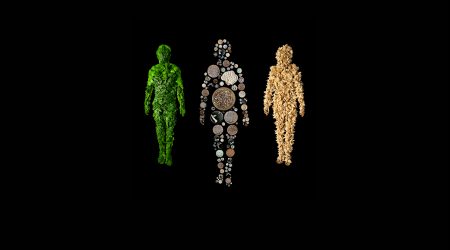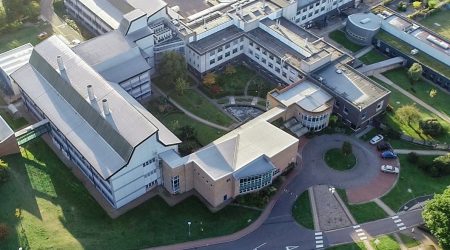We caught up with former PhD student Mario, who is now an Associate Professor of Biology at Northern New Mexico College
What did you study at the John Innes Centre?
I studied Cajal bodies (CB), which are structures found inside the nucleus of a cell, about 0.5µm.
They contain high concentrations of molecules that are involved in many cellular processes. Specifically I identified mutant cells inside plants with multiple CBs, named Poly Cajal Body (pcb). The idea of looking for mutants in the nucleus of plants at the John Innes Centre, was way ahead of the science, like 20 years ahead, so that was the “wow” for me.
Even today we don’t know what Cajal bodies do. They are an enigma. They don’t have membranes so how do they hold their structure?
I chose to study at the John Innes Centre because of the uniqueness of my project and the combined mentorship of Liam (Dolan) and Peter (Shaw). I was in Mexico, so I interviewed by phone; they told me they would support me when I arrived and that really sold it to me.
What key skills did you learn here?
It was valuable to learn how to approach a scientific question, along with skills like reasoning, scientific interaction, collaboration and how to enjoy science.
These skills have made a huge difference in my career, in particular learning about how to approach science and think about biology in general.
The John Innes Centre also allows interactions and collaborations without conflict (both personal and scientific) and encourages you to think big. Thinking in big questions is a valuable skill.
How has your career developed since graduating?
I was interested in studying the cell nucleus but at that time there was not enough research in this area in plants.
I moved to study the nucleus in animals (Drosophila) in order to learn, so I could apply that knowledge in plants.
Following my PhD I had three post doctoral jobs, in different labs, studying the nucleus. It has taken many years, but we now know Cajal bodies are very important for defence responses in stressed plants.
I am a Biology Professor at Northern New Mexico College. It’s a college not a university and is a good balance for me.
I’m a single father to a five-year-old and the pace is right; I can still do science but the pressure is a little less in this environment. Here I have my personal life with my son and still do my science. I work with mature and first generation students (the first ones in their families to achieve or pursue a degree).
I am very proud that they succeed and accomplish more than they can ever imagine, like attending famous institutions like Princeton and Duke after being in my lab.
You were recently included in the top 100 most inspiring Hispanic scientists in the US, an impressive accolade
The recognition from the award is amazing.
I see it as ‘keep on going, you’re doing good’, because sometimes if you haven’t published a paper, the experiment doesn’t work or a student doesn’t graduate, that sets you back.
The award recognised what I have been doing with my students.
I am in a position where my science is important, I have my question. But if a student comes with a new approach or something new to discover, I have flexibility with my funding to really drive students into research.
What is your advice for current students or recent graduates?
The powerful research that is created at the John Innes Centre is part of what makes the culture so fantastic.
But the opportunity to interact with faculty, support staff, graduate students and post-docs, and the international nature of the John Innes Centre is what really makes the culture.
My favourite memories are of the coffee breaks, they were fantastic. I was having a cup of tea with David Baulcombe, or chatting about over a coffee with Rico (Coen). I think that proximity and approach was amazing. In retrospect this type of culture, and these interactions are the most valuable part of my time at the John Innes Centre.
And, of course, those Fridays at the Rec Centre.





